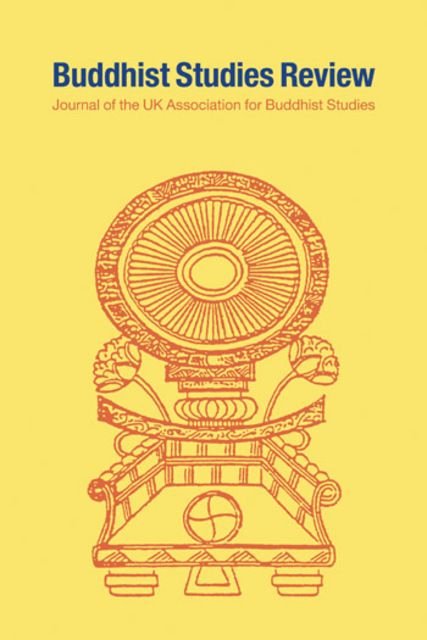Putting the Madhyamaka Trick in Context: A Contextualist Reading of Huntington’s Interpretation of Madhyamaka

Full description
In a series of works published over a period of twenty five years, C.W. Huntington, Jr. has developed a provocative and radical reading of Madhyamaka (particularly Early Indian Madhyamaka) inspired by ‘the insights of post- Wittgensteinian pragmatism and deconstruction’ (1993, 9). This article examines the body of Huntington’s work through the filter of his seminal 2007 publication, ‘The Nature of the Madhyamika Trick’, a polemic aimed at a quartet of other recent commentators on Madhyamaka (Robinson, Hayes, Tillemans and Garfield) who attempt ‘to read Nagarjuna through the lens of modern symbolic logic’ (2007, 103), a project which is the ‘end result of a long and complex scholastic enterprise … [which] can be traced backwards from contemporary academic discourse to fifteenth century Tibet, and from there into India’ (2007, 111) and which Huntington sees as distorting the Madhyamaka project which was not aimed at ‘command[ing] assent to a set of rationally grounded doctrines, tenets, or true conclusions’ (2007, 129). This article begins by explicating some disparate strands found in Huntington’s work, which I connect under a radicalized notion of ‘context’. These strands consist of a contextualist/pragmatic theory of truth (as opposed to a correspondence theory of truth), a contextualist epistemology (as opposed to one relying on foundationalist epistemic warrants), and a contextualist ontology where entities are viewed as necessarily relational (as opposed to possessing a context-independent essence.) I then use these linked theories to find fault with Huntington’s own readings of Candrakirti and Nagarjuna, arguing that Huntington misreads the semantic context of certain key terms (tarka, drsti, paksa and pratijña) and fails to follow the implications of Nagarjuna and Candrakirti’s reliance on the role of the pramanas in constituting conventional reality. Thus, I find that Huntington’s imputation of a rejection of logic and rational argumentation to Nagarjuna and Candrakirti is unwarranted. Finally, I offer alternate readings of the four contemporary commentators selected by Huntington, using the conceptual apparatus developed earlier to dismiss Robinson’s and Hayes’s view of Nagarjuna as a charlatan relying on logical fallacies, and to find common ground between Huntington’s project and the view of Nagarjuna developed by Tillemans and Garfield as a thinker committed using reason to reach, through rational analysis, ‘the limits of thought.’
- typeImage
- created on
- file formatjpeg
- file size82 KB
- container titleBuddhist Studies Review
- creatorMichael Dorfman
- issn1747-9681 (online)
- issue31.1
- publisherEquinox Publishing Ltd.
- publisher placeSheffield, United Kingdom
- doi
We use cookies to analyze our traffic. Please decide if you are willing to accept cookies from our website. You can change this setting anytime in Privacy Settings.
